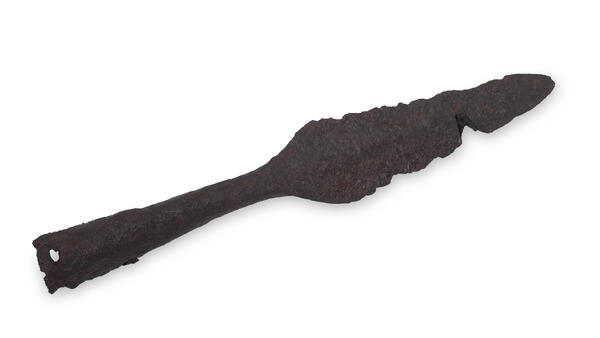The collection of the Kursk Museum of Archaeology includes an iron spearhead. The object is dated to the 5th–7th centuries and belongs to the early Slavic Kolochin archaeological culture. The spears were small, about one meter in length, and were probably used not only for throwing, but also for close combat. This weapon was discovered in 1965 by the prominent Kursk archaeologist and writer Yuri Alexandrovich Lipking during the study of an underground burial ground near the village of Lebyazhye. The spearhead was located in an oval pit 0.91 meters deep, under a small pile of charred bones and ceramic fragments.
The burial was performed according to the cremation rite, leaving only a handful of small, charred bone fragments, which were collected from the funeral pyre and placed in a shallow pit. The discovery of an armament item suggests that the deceased was a warrior. The appearance of Slavic warriors during the Balkan raids of the 6th–7th centuries is depicted in metal figurines found in Velestino, Greece. These figures portray bearded, long-haired warriors, armed with round shields, swords, and axes. Interestingly, one of them is depicted sitting on a short horse. The chest of one infantryman shows traces of paint or tattoos, and the rider wears a helmet.
The Byzantine Emperor Maurice described the Slavs’
style of combat in this way:



